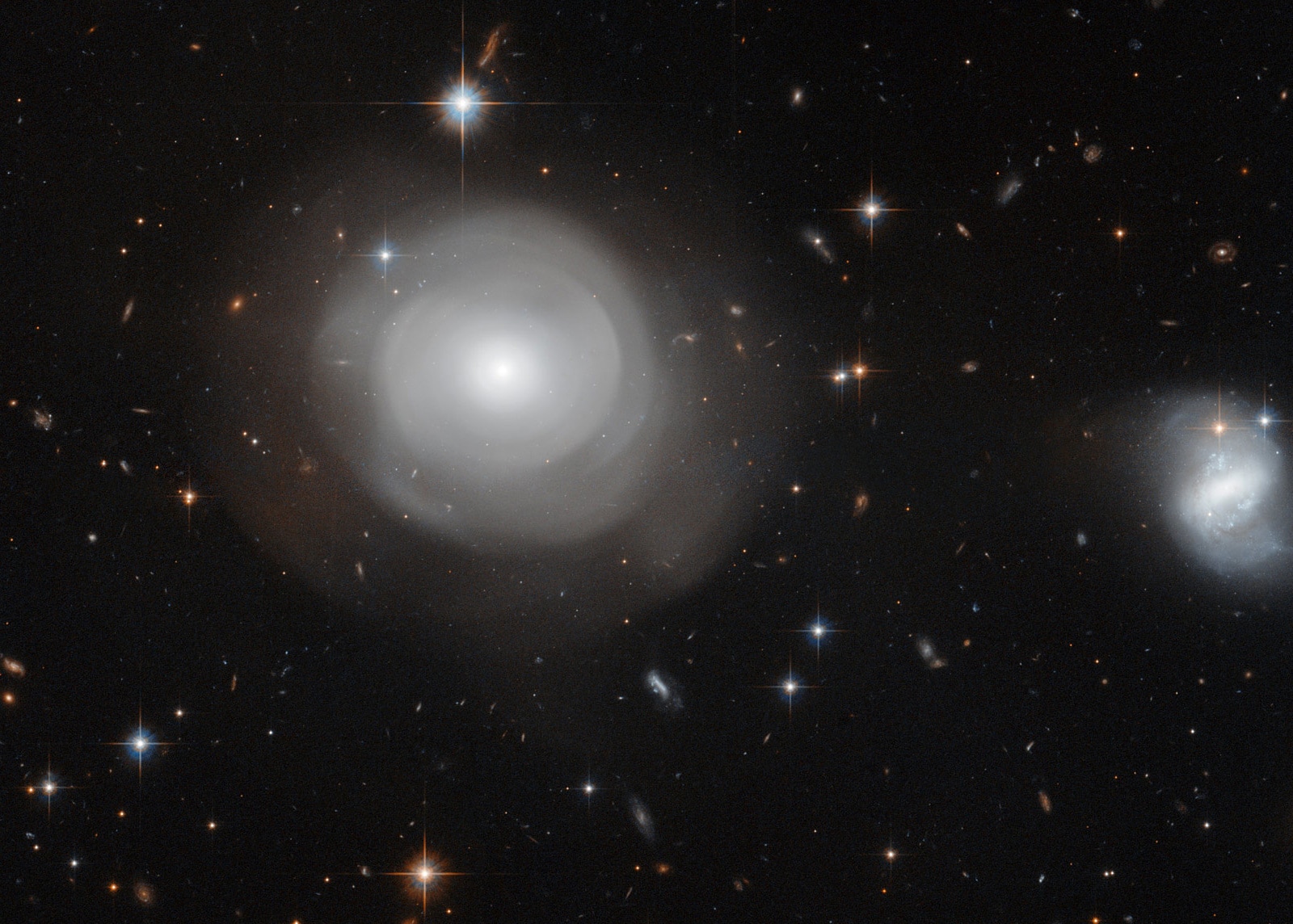Create a free profile to get unlimited access to exclusive videos, sweepstakes, and more!
Galactic Shell Game

Since astronomers first figured out the nature of galaxies nearly a century ago, you’d think that by now we’d understand them pretty well.
And in most cases we do. But sometimes they throw us a curve, and every now and again we see something we’re not quite sure we can explain easily.
The image above shows just such a galaxy: ESO 381-12. Magnificent, isn’t it? It has features of a spiral galaxy, or at least a disk galaxy (spirals are disks, but some disk galaxies don’t have spirals), and some features more like an elliptical galaxy. But its most obvious features are those weird arcs all around it.
Except they aren’t arcs, they’re shells. And they’re huge, tens of thousands of light-years across. What could cause such enormous structures to form?
The most obvious answer would be a collision with another galaxy. When galaxies collide, their mutual gravity can create all kinds of bizarre, twisted shapes. Both elliptical and spiral galaxies can have long streamers of stars and gas drawn away from them (called “tidal tails”), or can be sculpted into gigantic rings.
These shells, though, are more mysterious. They are only seen around ellipticals, not spirals. Other examples include Centaurus A and NGC 3923 (which has as many as 42 separate shells!). Roughly 10 percent of ellipticals have these shells.
One idea on how these form is if a big elliptical collides with a smaller galaxy, and the collision is head-on (the smaller galaxy plunges right through the center of the elliptical). The gravitational interaction can cause ripples of material to compress and spread outward, a bit like ripples on a pond. This can cause waves of star formation, producing the shells. Young stars are seen in the shells, so that’s consistent. It's also possible (though less likely) that more off-center collisions strip away the stars from a smaller galaxy, flinging them around the bigger galaxy, creating the shells.
I poked around the scientific journals and there does seem to be a consensus that the head-on collision is what’s going on in general, though the details are still being hammered out. In some cases it's not at all clear what the primary cause is. Interestingly, many, but not all, of these galaxies have indications that they underwent major collisions in their past as well (which may be why we don’t see spirals with shells; spiral arms may not survive such big collisions, and the result after an eon or two is an elliptical galaxy).
The first such shell galaxy was discovered in 1980, and it’s only been recently that detectors have become sensitive enough to see the faint shells against the much brighter galaxy. I suspect that as more of these objects are analyzed we’ll get a better idea of how they form and evolve, but also that we’ll find examples that will still be a bit baffling. That is almost always the case in astronomy when a new type of object is found.
The important first step is getting an overall idea of how they form in the first place. After that, the weirder examples are usually just the result some other process going on that modifies the basic structure.
In a nutshell, it exemplifies one of my favorite things about science: how it moves ever-closer to the truth. The first step may be the biggest, explaining the most general stuff, and then the next steps are smaller, but do a better and better job explaining the details of what we see. We may asymptotically approach the truth, and never reach it in totality exactly, but at some point it’s close enough to be satisfied that we got this.
I may have to make this into a bumper sticker. Science: We Got This.














